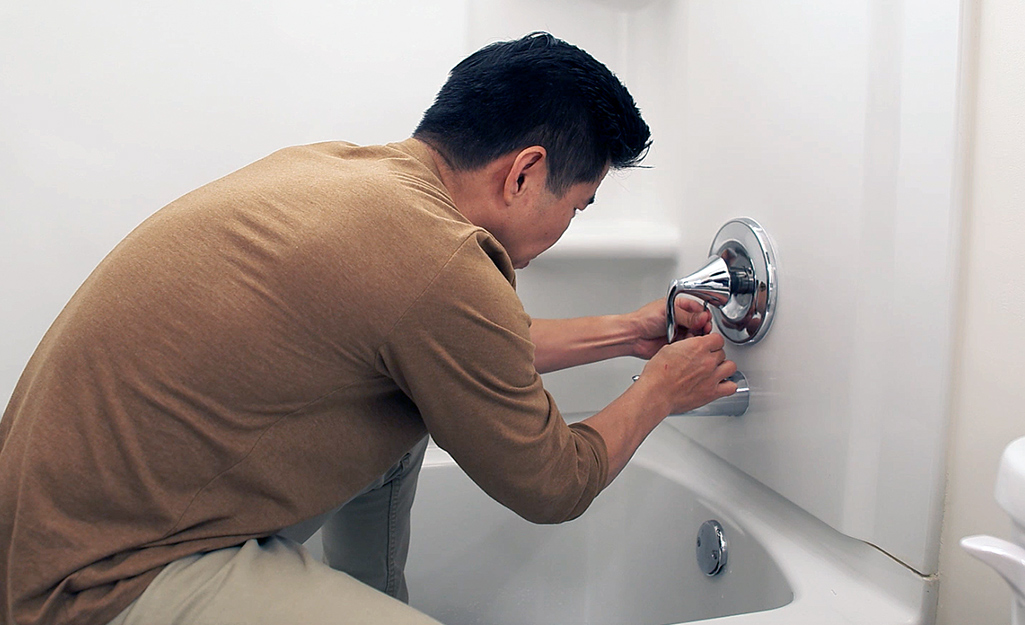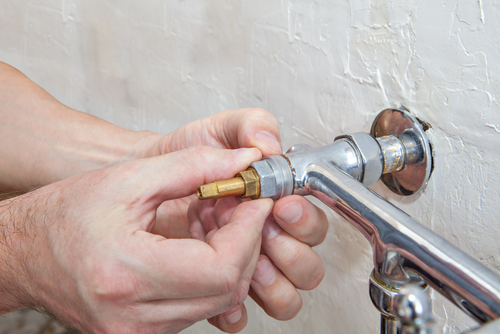We have unearthed the article on 4 Common Reasons for a Leaky Faucet directly below on the internet and believe it made good sense to write about it with you on this page.

Leaking taps could feel like a small inconvenience, but their impact goes beyond simply the nuisance of the audio. From drainage to sustaining unneeded monetary expenses and health and wellness dangers, disregarding a dripping faucet can lead to numerous effects. In this post, we'll explore why it's important to resolve this typical household concern promptly and properly.
Wastefulness of Water
Environmental Impact
Trickling faucets add considerably to water wastefulness. According to the Environmental Protection Agency (EPA), a single tap trickling at one drip per secondly can throw away more than 3,000 gallons of water per year. This not only strains water sources but additionally influences ecosystems and wildlife based on them.
Step-by-Step Overview to Taking Care Of a Dripping Faucet
Devices Needed
Prior to attempting to take care of a dripping faucet, collect the necessary devices, consisting of an adjustable wrench, screwdrivers, substitute components (such as washers or cartridges), and plumber's tape.
Usual Faucet Issues and Their Solutions
Determine the sort of tap and the specific problem triggering the drip. Usual problems include worn-out washers, rusty shutoff seats, or damaged O-rings. Refer to manufacturer directions or on-line tutorials for detailed advice on repairs.
Financial Costs
Increased Water Bills
Past the ecological influence, trickling taps can pump up water expenses significantly. The built up wastage over time translates into greater energy costs, which could have been avoided with prompt repair services.
Prospective Residential Property Damage
Moreover, long term leaking can lead to harm to fixtures and surface areas surrounding the tap. Water build-up can create staining, corrosion, and also structural problems if left unattended, leading to additional repair service prices.
Health and wellness Problems
Mold and Mold Growth
The consistent presence of wetness from a trickling faucet produces an ideal atmosphere for mold and mildew and mold development. These fungi not only jeopardize interior air quality but additionally posture health dangers, especially for people with respiratory system problems or allergic reactions.
Waterborne Diseases
Stagnant water in trickling taps can come to be a breeding place for microorganisms and other pathogens, raising the danger of waterborne illness. Pollutants such as Legionella germs flourish in stationary water, possibly causing severe diseases when ingested or breathed in.
DIY vs. Professional Fixing
Benefits and drawbacks of Do It Yourself Repair Work
While some might attempt to repair a dripping faucet themselves, do it yourself repair services come with their very own set of difficulties. Without correct understanding and devices, DIY efforts can exacerbate the problem or bring about incomplete repair services, prolonging the issue.
Benefits of Hiring a Specialist Plumber
Working with a professional plumber makes sure that the underlying source of the dripping faucet is dealt with successfully. Plumbers possess the competence and devices to detect and fix tap concerns successfully, saving time and minimizing the risk of further damage.
Ecological Duty
Specific Payment to Preservation
Taking obligation for repairing leaking faucets straightens with more comprehensive initiatives toward water conservation and ecological sustainability. Every person's activities collectively make a significant influence on protecting precious sources.
Lasting Living Practices
By prioritizing punctual repair work and adopting water-saving behaviors, individuals add to sustainable living techniques that benefit both existing and future generations.
Safety nets
Regular Upkeep Tips
To prevent leaking faucets, do regular maintenance such as cleansing aerators, inspecting for leaks, and changing worn-out parts without delay. Additionally, think about mounting water-saving devices or upgrading to a lot more reliable fixtures.
Significance of Prompt Fixes
Resolving dripping faucets as soon as they're discovered stops more water wastefulness and possible damages, ultimately saving both water and money in the future.
Effect On Residential Or Commercial Property Value
Assumption of Well-Maintained Building
Keeping a residential or commercial property in good condition, including resolving maintenance issues like trickling faucets, boosts its viewed worth and charm among prospective buyers or occupants.
Influence on Resale Worth
Residences with properly maintained plumbing fixtures, consisting of faucets, command higher resale worths in the real estate market. Dealing with trickling faucets can contribute to a favorable impact throughout home examinations and settlements.
Verdict
Resolving a trickling faucet goes beyond mere benefit; it's a necessary action towards saving water, minimizing economic expenses, and securing health and wellness and residential or commercial property. Whether through do it yourself fixings or specialist help, acting to repair dripping taps is a little yet impactful method to promote liable stewardship of resources and contribute to a much healthier, much more sustainable future.
How to Fix a Leaky Faucet: Step-by-Step Repair Guide
A leaky faucet may seem like a simple annoyance, but if it's not fixed promptly, that leak could cost hundreds to potentially thousands. From water damage to mold, mildew, and high water bills, even a tiny leak can be catastrophic if left unattended. Damage like this can even affect the overall value of your home, so it's important to take the right approach for leaky faucet repair. You may need the help of a plumber in some cases, but we've got a few tips you can try on how to fix a leaky faucet before calling the pros.
Four Faucet Types
When you're learning how to fix a leaky faucet, the first step is knowing what kind of faucet you're working with! There are four common types.
Cartridge Faucets
Cartridge faucets come in one- or two-handled varieties. In one-handled cartridge faucets, hot and cold water combines in a single cartridge. In the two-handled versions, hot and cold water are controlled separately and mixed in the faucet.
Ball Faucets
Ball faucets have a single lever you push up and down to adjust the pressure and rotate to change the temperature. A slotted metal ball controls the amount of water allowed into the spout.
Compression Washer Faucets
They're the oldest type of faucet, but they're still used in many homes — especially older ones. Compression faucets have two separate handles that, when turned, raise or lower the washer that seals a water valve. This valve stops water from flowing through the faucet when it is turned off.
Disc Faucets
Disc faucets rarely need to be repaired due to their maintenance-free design. The water flow is controlled by two discs — the upper one raises and lowers against a fixed lower disc, creating a watertight seal. If your disc faucet starts leaking, you may need to replace the seals or clean residue buildup from the inlets.
Fixing a Leaky Faucet
Step 1: Turn Off the Water
Whether you're learning how to fix a leaky bathtub faucet or how to fix a leaky kitchen faucet, always turn off the water supply to your working area when you're fixing a leak. The last thing you want is a flood added to your list of things to fix.
Look for the shutoff valves below your sink or around the tub and turn them clockwise to stop the water flow. If your faucet doesn't have shutoff valves, you may need to turn off the water for the whole house. Check to make sure it's off by turning the faucet on. If nothing comes out, you're ready to start the repair.
Step 2: Take Apart the Faucet
How you disassemble your faucet depends on the type of fixture you have. You can use a flathead screwdriver to remove the caps on top of the handle or handles for cartridge and compression faucets. Inside, you should see handle screws. Unscrew these with a screwdriver to remove the handle.
Disc- and ball-style faucets will typically have an inlet screw near the handle, and removing that will reveal the interior of the faucet.
Detach the Valve Stem
For cartridge- and compression-style faucets, you'll see the inner valve stem or cartridge once you remove the faucet handles. If you have a compression faucet, unscrew the brass valve stem. If you have a cartridge faucet, pull out the cartridge. If your cartridge has been in place for a while, it may require some tools or extra force to remove it due to mineral deposits.
Examine and Replace Parts
Once you've removed the parts, check them out to confirm what needs to be replaced. You may see corroded rubber washers, O-rings, stems, or cartridges. On a ball-style faucet, check the seats and springs for damage.
If you need to repair a leaky disc faucet, check the inlet and seals on the lower disc.
Once you determine what parts must be replaced, visit your local hardware store. Bring the damaged parts with you to ensure you can purchase the correct components to replace them.
Clean Valves and Faucet Cavity
If you've removed a stem or cartridge, you may notice mineral buildup in the faucet's threads. Use white vinegar to clean the valve seat by soaking it for a few minutes, then scrub it away with a soft toothbrush and rinse with warm water. You can also clean the interior of the faucet in the same way.
Reassemble the Faucet
Once your faucet is cleaned and the required parts have been replaced, it's time to reassemble it. Put the pieces back together and slowly turn the water supply back on. Doing this slowly is crucial because too much initial water pressure can damage the new hardware you've just installed.
https://homewarranty.firstam.com/blog/how-to-fix-leaky-faucet

I'm very focused on 4 Common Reasons for a Leaky Faucet and I really hope you enjoyed the blog posting. If you enjoyed reading our page plz don't forget to pass it around. I thank you for reading our article about Why Is It Important To Fix Your Leaking Tap/Faucet?.